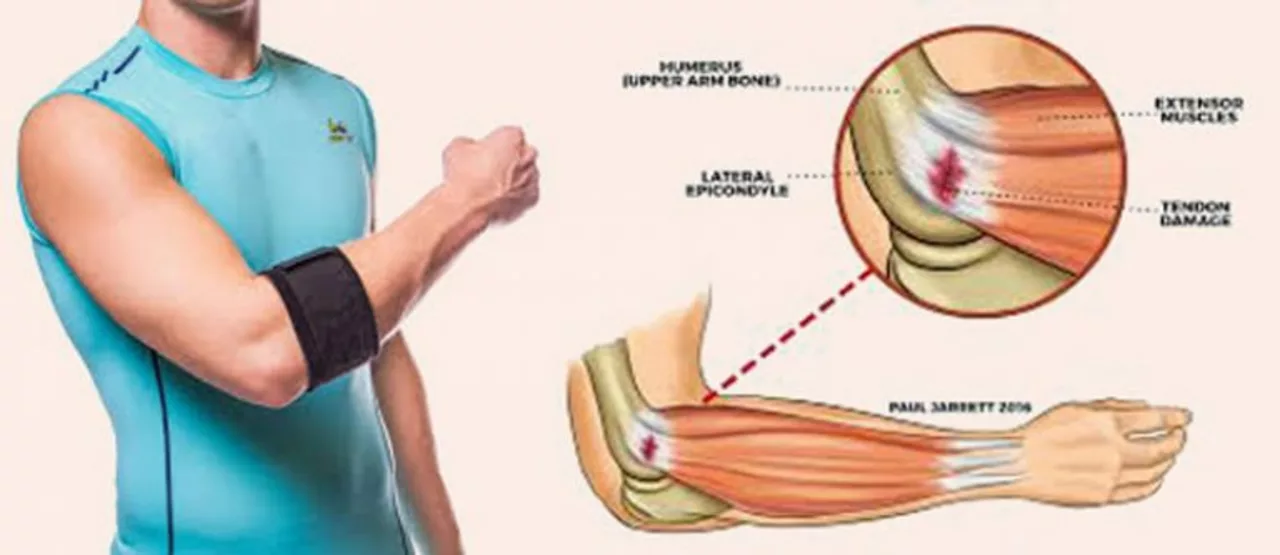Understanding Tennis Elbow (Lateral Epicondylitis)
Before diving into the nitty-gritty of tennis elbow, let’s first get a clear understanding of what it is. Tennis elbow, medically referred to as Lateral Epicondylitis, is a common condition that causes pain around the outside of the elbow. The name 'tennis elbow' might be misleading as it's not just tennis players who can get this condition. It's often caused by overuse of the tendons in your elbow and can result from any repetitive arm, elbow, hand, or wrist movements.
The Anatomy of the Elbow
To fully understand tennis elbow, it's essential to have a basic understanding of the elbow's structure. The elbow is a joint made up of three bones: the humerus (the upper arm bone), and the radius and ulna (the two bones in the forearm). The outer part of the elbow, known as the lateral epicondyle, is the point where the tendons of your forearm muscles attach to the bone. These tendons can become strained and develop tiny tears, leading to inflammation and severe pain, which is what we call tennis elbow.
Identifying the Symptoms
Recognizing the symptoms of tennis elbow is crucial for its early diagnosis and treatment. The most prominent symptom is a pain and tenderness in the outer part of your elbow. This may extend into your forearm and wrist, and can make it difficult to perform simple actions like lifting or gripping objects. You might also feel stiffness in the elbow, particularly in the morning, and a constant dull ache even when not using your arm. These symptoms usually develop gradually, but they can sometimes appear suddenly after a strenuous activity.
Causes and Risk Factors
Tennis elbow is typically the result of overuse of the forearm muscles and tendons, particularly through repetitive motions. Despite its name, tennis elbow is not limited to athletes. Anyone who performs activities that strain the arm muscles can develop this condition, like carpenters, painters, or even computer workers. Age can also be a risk factor, as tennis elbow is most common in people between the ages of 30 and 50.
Diagnosing Tennis Elbow
Diagnosing tennis elbow typically involves a physical examination by a healthcare professional. They may ask you to perform certain movements to check for pain and evaluate your range of motion. In some cases, imaging tests, such as X-rays or MRI, may be used to rule out other conditions that could be causing your symptoms. It's crucial to seek medical attention if you suspect you may have tennis elbow, as early diagnosis can lead to more effective treatment.
Treatment Options
Treatment for tennis elbow usually starts with conservative measures. These may include rest, ice, and over-the-counter pain relievers. Physical therapy can also be beneficial to strengthen the forearm muscles and improve flexibility. In more severe cases, treatments like corticosteroid injections or surgery might be considered. Remember, every case is unique, so treatment will be tailored to your specific symptoms and lifestyle.
Prevention Tips
Preventing tennis elbow involves taking care of your muscles and joints, particularly if you're involved in activities that put strain on your arms. Regularly performing exercises that strengthen your forearm muscles can be beneficial. Also, ensuring you use the correct technique in sports or work activities can reduce your risk. Lastly, don't ignore the pain. If your elbow hurts, take a break and give it time to heal.
Living with Tennis Elbow
Living with tennis elbow can be challenging, but with the right treatment and care, you can manage the symptoms and continue with your daily activities. It's important to listen to your body and not push yourself too hard. With patience and consistency, you can overcome tennis elbow and get back to enjoying your life and activities.


